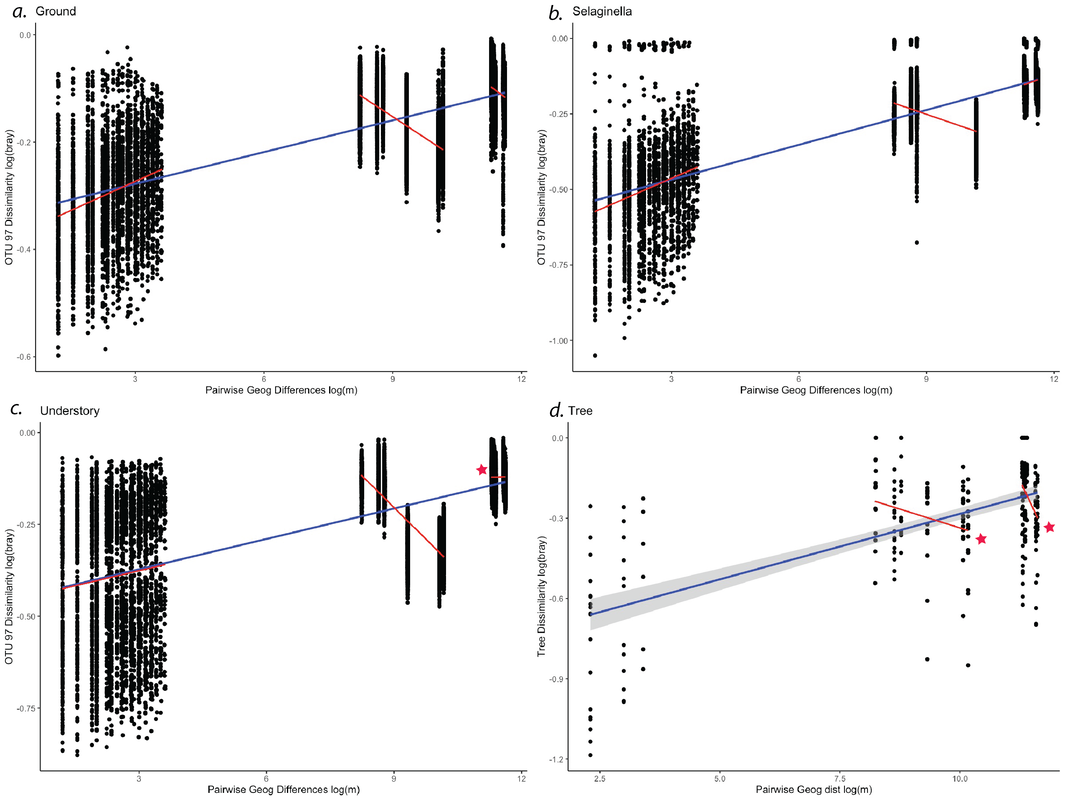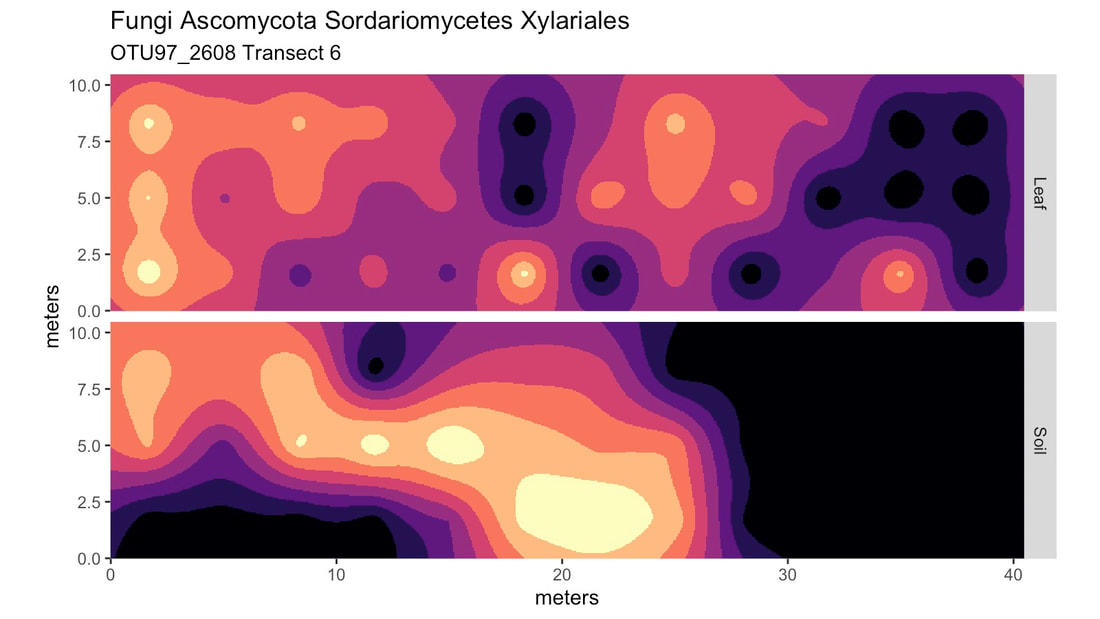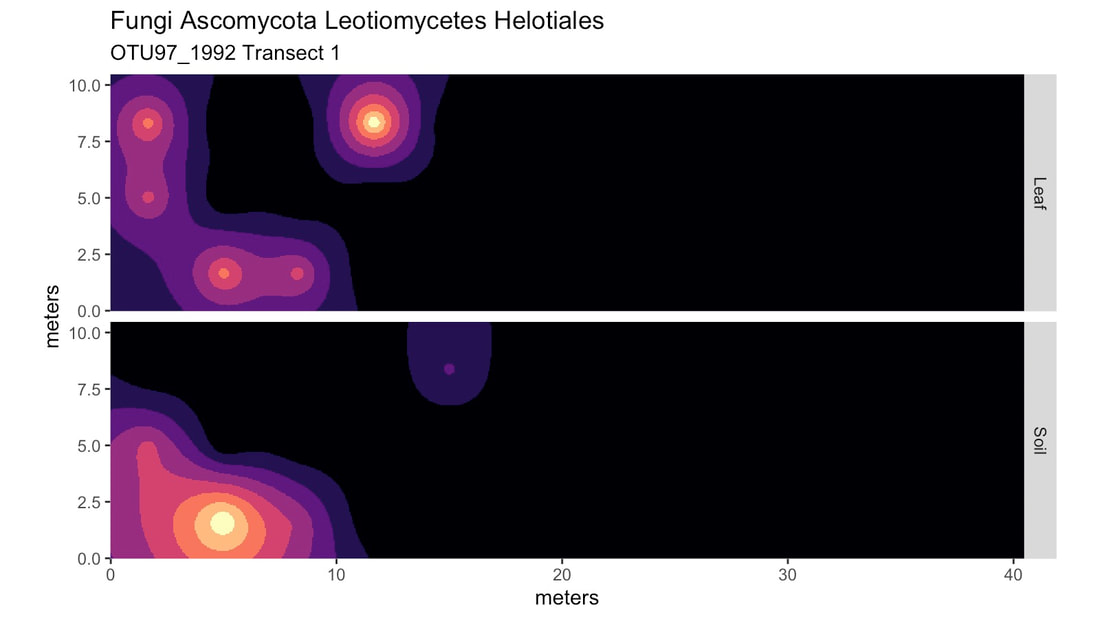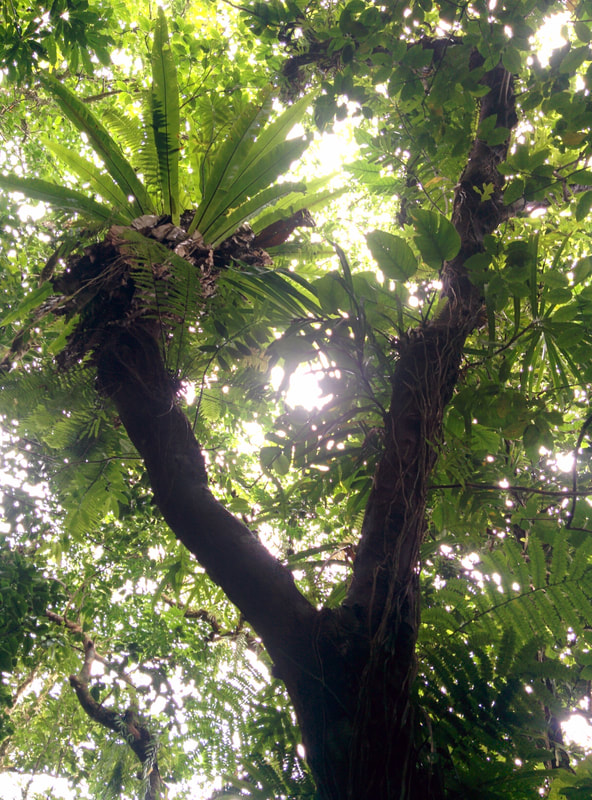Fungal Spatial Dynamics
|
The spatial analysis of biological communities is a staple of biogeography and is used to describe why organisms occur where they do. The similarity between two observations typically decreases with geographic distance, a phenomenon consistent with Tobler’s first law of geography. Within ecology, this is known as the distance decay relationship and it describes the pattern where similarity of species composition decreases with increasing geographic distance. The distance decay relationship tests patterns of spatial distribution, species aggregation, and manifests biologically in processes such as dispersal limitation and niche partitioning. Biogeographical features and related biological processes are poorly understood among natural fungal communities, so fungal ecologists are calling for efforts to answer fundamental questions about the distribution and drivers of fungal diversity. How does the geographic scale of investigation influence our understanding of fungal community characteristics?
|
Mapping Fungal Communities
|
Fungi are readily found in plants, animals, soil, water, and air. Forest ecosystems are absolutely saturated in fungi but due to the cryptic nature of microorganisms, it is troublesome to know how fungi are distributed in space.
This project maps out the distributions of individual fungal species. We used spatially explicit sampling to generate a grid of environmental samples from which we extracted fungal barcode sequences in order to make maps of fungal distributions between habitats. A neat part of this project is that we took vertically stratified samples so that we could map fungal distributions in three-dimensions. |





